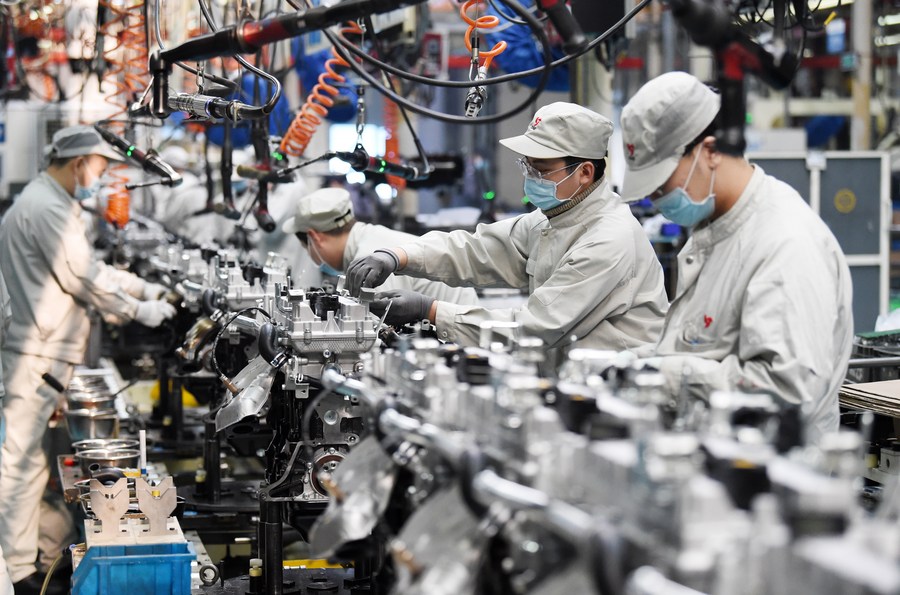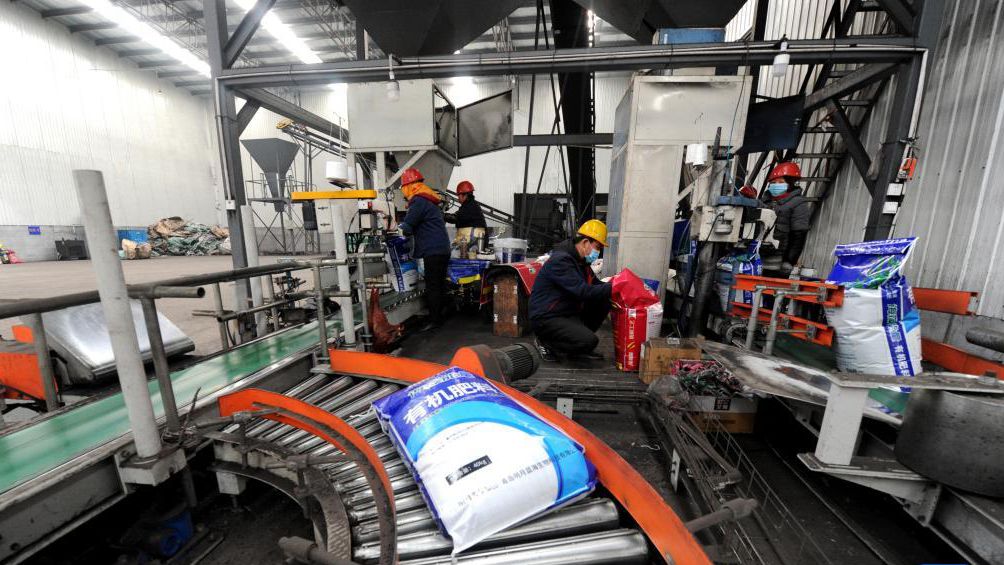BN DESK
[The article was first published in CGTN. CGTN Editor’s note: The Communist Party of China will convene the third plenary session of its 20th Central Committee from July 15 to July 18 in Beijing to discuss the issue of further comprehensively deepening reform and advancing Chinese modernization. Reform and opening-up constitute China’s second revolution, a monumental journey of development and progress for both China and the world. This process has profoundly transformed China and significantly impacted the global landscape. CGTN First Voice has put together a six-part series “To a Brighter Future: China’s Reform and Opening Up in New Era” to delve into China’s achievements in economic, political, social and ecological domains since the reform and opening-up period, exploring the directions and measures for China’s continued comprehensive furthering of reform.]
The third plenary session of the 20th Central Committee of the Communist Party of China (CPC) will convene in mid-July. Traditionally, these sessions are crucial for outlining systematic, comprehensive, and forward-looking frameworks for China’s development and modernization. This year, marking a pivotal moment in advancing Chinese modernization, the plenum holds particular significance. Policy decisions made during this session are expected to attract considerable attention and interest.
Over the past four decades of China’s modernization, reform has been the most defining element. Serving as the cornerstone of Chinese modernization, reform has converted the country’s vast population into a developmental advantage, facilitated its integration into the global economy, and leveraged historical opportunities for modernization. China’s experience over these decades demonstrates that the transformative power of reform lies in its capacity to unlock the energy and vitality of Chinese society, driving rapid development and propelling China to its current status as the world’s second-largest economy.
Dismantling outdated systems, mechanisms, and institutions that hinder development lies at the heart of China’s reform agenda. Mechanism reform has cut the binding ropes, liberating minds and unleashing unprecedented vitality with unexpectedly significant effects. Take the example of the rural household contract responsibility system reform. China is large in population, but its large population was unable to translate into a force for modern development and construction. The reform not only resolved longstanding issues in labor productivity, but also safeguarded China’s food security by significantly boosting agricultural output within just a few years.
More importantly, it liberated rural labor, allowing many to join the industrial and service sectors, thus spurring the development of small towns and township enterprises. The large-scale integration of rural labor into the industrial workforce significantly contributed to China’s emergence as the world’s manufacturing powerhouse. According to a survey by China’s National Bureau of Statistics, the proportion of migrant workers employed in non-agricultural industries continued to rise in 2023 – 53.8 percent of migrant workers were engaged in the tertiary sector, while 45.5 percent were in the secondary sector.

Reform in science and education is essential for elevating national modernization and global competitiveness. In the late 1970s, China recognized science and technology as “primary productive forces,” reinstated the college entrance examination, and reformed national education. These reforms enabled China to cultivate the world’s largest pool of higher-educated talents within just over four decades, supplying high-quality personnel crucial for subsequent modernization. In 1978, China’s gross enrollment ratio for tertiary schools was just 1.55 percent, the figure skyrocketing to 60.2 percent by 2023. Science and education reforms have transformed China’s vast human resources into powerful human capital, mitigating the pressures and burdens of a large population, converting weaknesses into strengths, and rapidly advancing China’s technological progress.
Economic system reform has been the cornerstone of China’s past 40 years of transformative change. It has vividly demonstrated its “Midas touch.” Economic reform addressed the stifling effects of the traditional planned economy on the market and society, providing solutions to previously insurmountable issues such as resource bottlenecks, market absence, product shortages and employment challenges, fostering an economy capable of competing globally. These reforms revitalized state-owned enterprises, sparked widespread entrepreneurial spirit and saw the rapid emergence of private enterprises while attracting substantial foreign investment into the Chinese market.
Notably, during the reform and opening-up, many rural farmers quickly transitioned into entrepreneurs and small business owners, with some even making their way into the Fortune Global 500. Official statistics reveal that China’s private economy contributes over 50 percent of tax revenue, more than 60 percent of GDP, over 70 percent of technological innovations, more than 80 percent of urban employment, and over 90 percent of all enterprises.

Workers are busy at an organic fertilizer packaging line in a bio-fertilizer factory in Zhaiwang Township, Yangxin County, east China’s Shandong Province, December 29, 2021. /Xinhua
Since the 18th National Congress, China has further refined its socialist market economy, establishing modern corporate systems and implementing various rural reforms, such as the separation of ownership rights, contract rights and management rights. These reforms include the introduction of collective asset shareholding and the market entry of collectively-owned construction land, allowing the market to play a decisive role in resource allocation and stimulating economic vitality.
In public services, efforts have been made to direct resources to grassroots levels, especially in rural areas, ensuring a more balanced distribution of basic public resources and enhancing the people’s sense of fulfillment. In governance, significant progress has been made in integrating legal, ethical, self-governance, intelligent and political governance to improve efficiency. These comprehensive reforms have steadily advanced China’s modernization.
In essence, the goal of reform is to dismantle systems and mechanisms that hinder modernization, creating an environment that energizes all stakeholders, including the government, market, society, households and individuals.
China has now entered a “deep water” zone in its reform process, facing more complex and urgent tasks than before. First, the effectiveness of previous reforms is diminishing, necessitating second rounds of reforms to generate new momentum. Second, the compatibility of different reforms has become increasingly prominent, as each reform is constrained by the need for other systemic changes, with socio-economic development no longer satisfied by isolated reforms. Third, the future path of reform is less clear than before, making it more challenging to build consensus. Lastly, shifting international relations has introduced uncertainties and risks, limiting the determination, confidence and scope for further reform.
Without navigating through this “deep water” zone, many issues that could be resolved will remain, transforming into pressures on various aspects of society, economy, culture and politics, significantly constraining China’s modernization.
Reform is essential to invigorate China’s development and provide new impetus for its modernization. Further comprehensive deepening of reform is therefore an inevitable topic for Chinese modernization in the new era. Only through further comprehensive deepening of reform can the vitality of all stakeholders, particularly individuals, be fully unleashed. This is the demand of the times, and the key to China achieving and building a great modern socialist country. Consequently, society eagerly anticipates the session to provide decisive guidance on further deepening reform and advancing China’s modernization.
The author Wang Chunguang is deputy director of the Institute of Sociology and head of the Social Policy Research Center at the Chinese Academy of Social Sciences.








